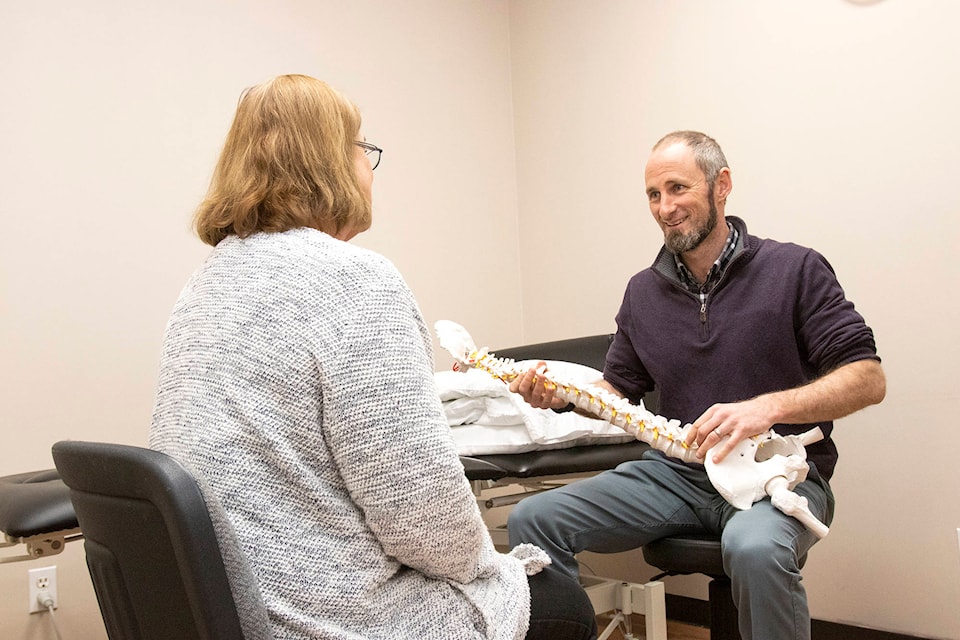Ask, exercise and warm up!
That’s the advice physiotherapist David Locke offers to people before they go outside to shovel.
Locke, who practises at Live Well Physiotherapy, says there is an influx of clients in winter, who have injured themselves skiing, slipping on ice or shovelling. The latter particularly among older folks.
“You’re either not shovelling or shovelling a whole lot at once and you don’t get to warm into the task,” he says, of intermittent snowfalls and how many people go outside with a cold body and spend 30 minutes shovelling a long driveway. “People don’t realize it’s exercise, so they don’t warm up like they might if they were going to the gym or out for a run.”
READ MORE: Planning now for Snow Angels
READ MORE: 21 temperature records broken as arctic chill lingers in B.C.
Locke explains that particularly in shovelling heavy, wet snow, there’s substantial twisting through the core and lower back. As well, he says almost nobody is ambidextrous when shovelling, so the twisting is all in one direction.
The result is often injury to the sacroiliac, lower back as well as perhaps abdominal pain, sore or strained muscles and shoulder and neck issues.
“There’s definitely an increase in people shovelling or slipping on ice coming in when they wouldn’t be coming in during summer months,” Locke says, noting that along with heading out without warming up, poor shovelling technique without bending knees to protect the back is another cause of injury.
So what can people do to avoid injury?
“Do simple twists, trunk twists, stretches and knee bends, hip circles and shoulder rolls, and stretch afterwards,” he says, suggesting people ask for help if needed. “For more specific advice, talk to a physiotherapist. If there’s an injury get it treated, or ask for advice on getting core-building exercises and stretches for prevention.”
@SalmonArm
barb.brouwer@saobserver.net
Like us on Facebook and follow us on Twitter
